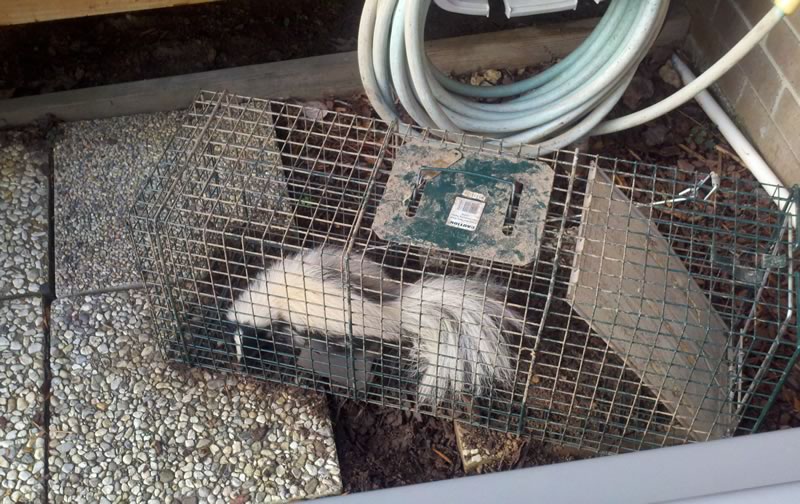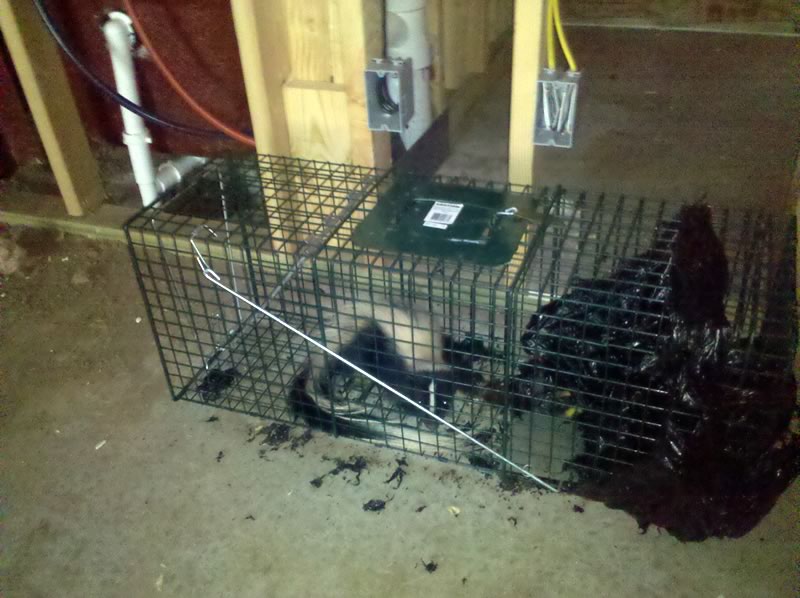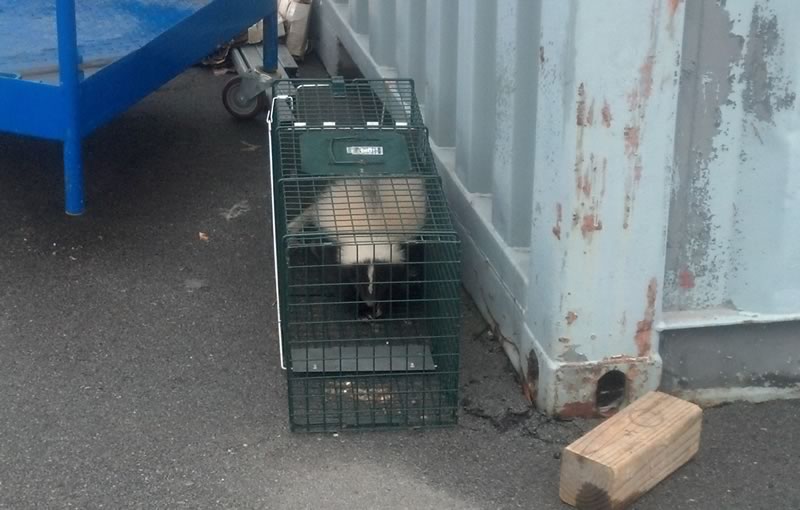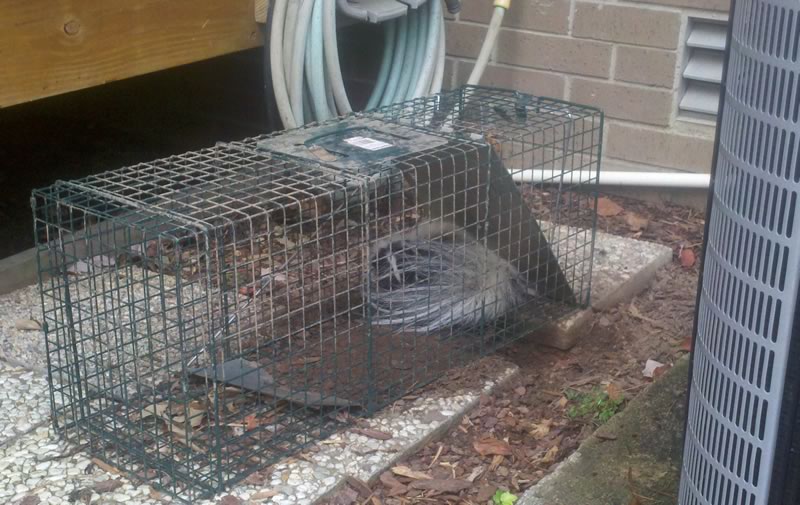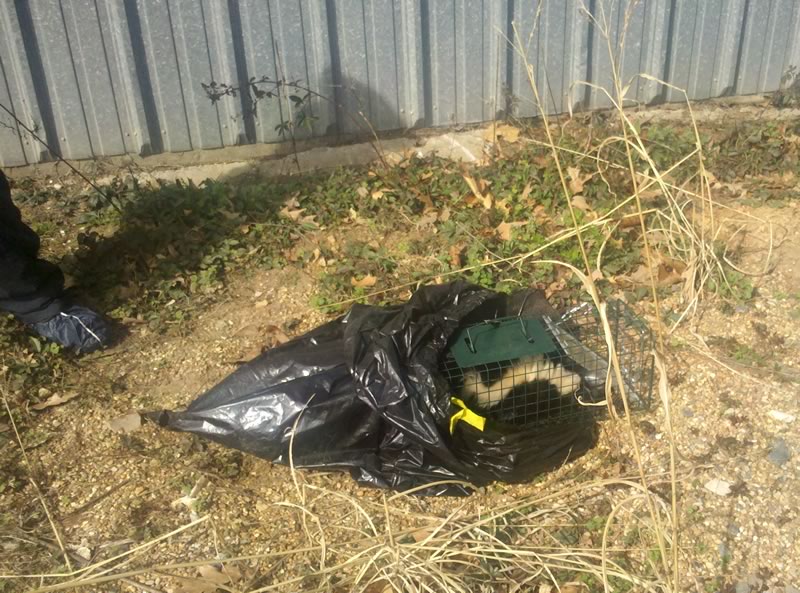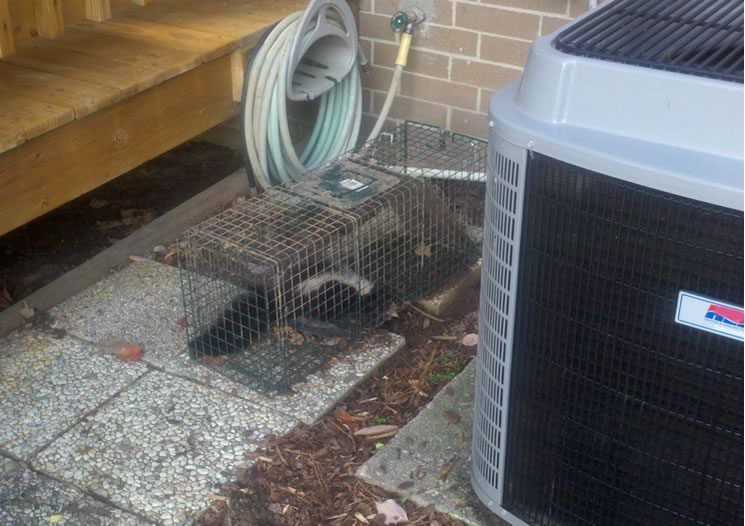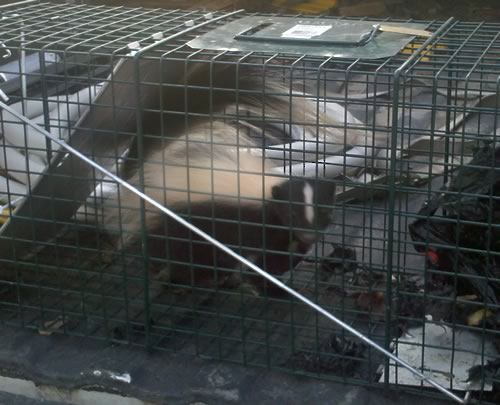
SKUNKS
Skunks
Striped and Spotted skunks are the 2 types that we have in Arkansas. The striped skunk is the most common and seen around yards. They can be from all white to all black and anywhere in between in coloring. Spotted skunks are smaller and less is known about them.
The best way to keep skunks from taken up residency in your yard or under your home is to remove things that attract the skunk: pet food, bird seed and make sure your garbage is in a sealed container. Make sure all entry ways into your home are sealed or screened.
Block crevice under house and outbuildings where they den. Remove other denning sites such as wood piles. Add light and water (i.e. sprinkler) to deter them from a favorite denning site. Try sprinkling strong spices (cayenne, curry, etc.).AGFC does not move skunks but there are companies that will trap and move them.
– What if my dog or even I get sprayed?
Try not to get sprayed! Skunks will warn you first by stomping their feet, hissing and clacking their teeth, and flaring their tail. They can spray accurately at 12′ and have a six shooter. Recipe to neutralize their oily spray: 1 quart hydrogen peroxide, 1/4 C. baking soda, 1 tsp. dish soap. garbage, compost pile.
General Background
Skunks are famous for their odorous defensive spray, deployed against perceived threats such as people, pets, and automobiles. They also spray in basements, garages, window wells, and under porches. Skunk musk spray is a yellow-tinted oily liquid stored in two sacs located on opposite sides of the anus. Each sac holds about a teaspoon of musk and is enough for multiple sprays. Skunk musk does not emanate from the animal, it is discharged through two “ducts” that allow the skunk to adjust the spray to a mist or stream, direct it at a specific target, and to shoot up to 15 feet with “both barrels.”
Skunk musk can temporarily blind and stun individuals unlucky enough to be sprayed in the face. Victims experience watering eyes, nasal irritation, and nausea.
Skunk musk is composed primarily of seven ingredients, six of which are sulfur-containing thiols that give the skunk musk its awful smell. Humans can smell skunk musk in concentrations as low as 10 parts per billion.
Fun Facts
- A skunk’s sulfuric spray has a range of up to 10 feet, and its odor can be detected up to 1.5 miles.
- Skunks eat wasps and honeybees, and will often attack beehives.
- Immune to snake venom, skunks are known to eat poisonous snakes like rattlesnakes.
- Although skunks have very poor eyesight, they have excellent senses of smell and hearing
- A group of skunks is called a surfeit.
Skunk Behavior
Activity: Skunks are nocturnal, so they are most active at night. They are mostly inactive during the coldest months in winter, when many gather in communal dens for warmth. For the remainder of the year, skunks are generally solitary, living and foraging alone.
Reproduction: Skunks have litters of 1-7 young in late April through early June.
Digging: Skunks have strong front paws and long nails which make them excellent diggers. They dig holes in lawns and gardens in search of food like grubs and earthworms. When no other form of shelter is available they can dig under foundation.
Spraying: Skunks are known to release a powerful smell through their anal glands, when threatened. Skunks will usually only attack when cornered or defending their young. Spraying is not the first method of defense. Skunks will growl, raise the fur on their back and stomp the ground.
Some of skunks’ favorite foods include: Insects, Small Rodents, Frogs, Worms and Grubs, Berries and even Bird Eggs.
 Little Rock, AR 501-868-3837 | Russellville, AR 479-968-4777 | Hot Springs, AR 501-442-5653 | Fayetteville, AR 479-899-6874
Little Rock, AR 501-868-3837 | Russellville, AR 479-968-4777 | Hot Springs, AR 501-442-5653 | Fayetteville, AR 479-899-6874


